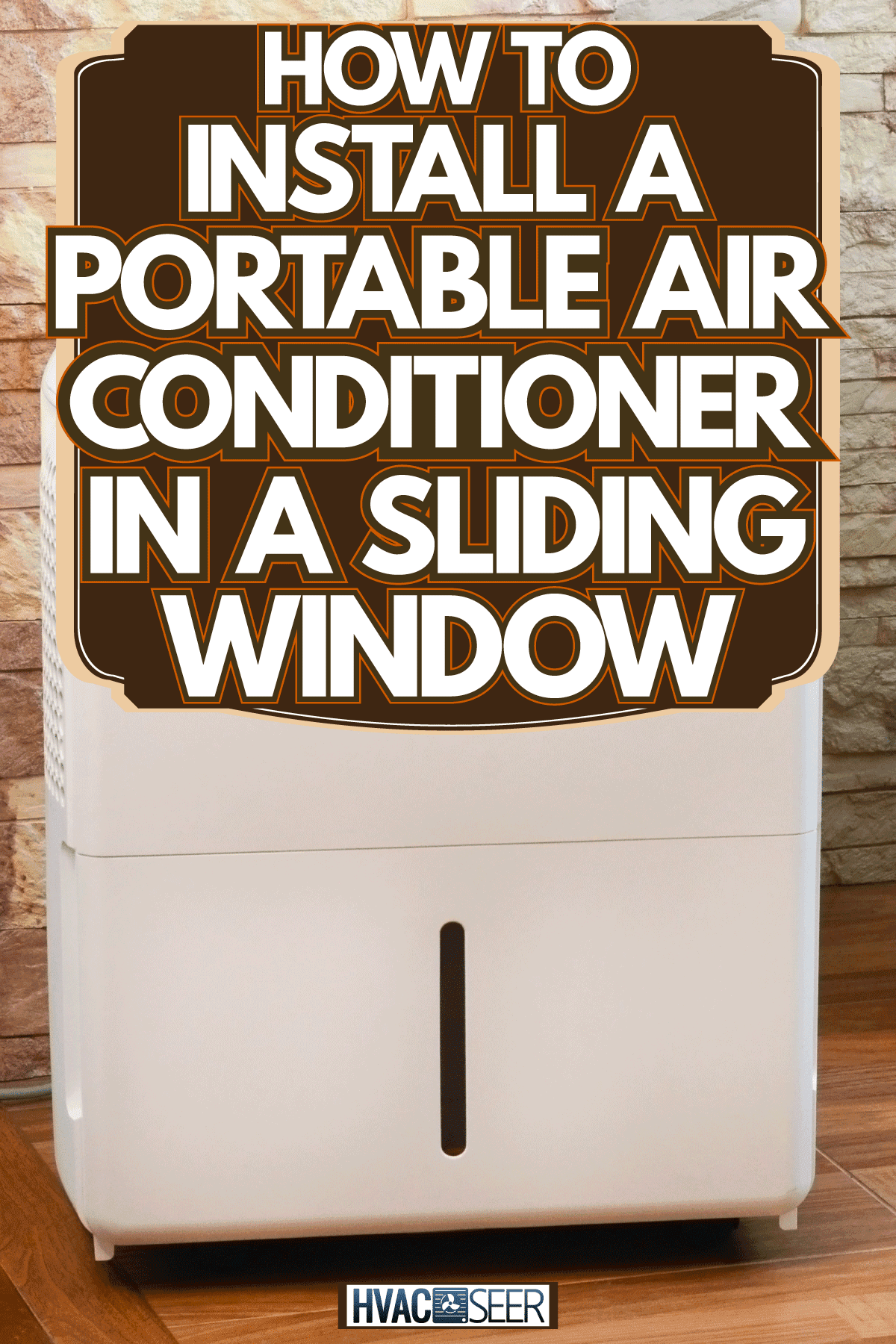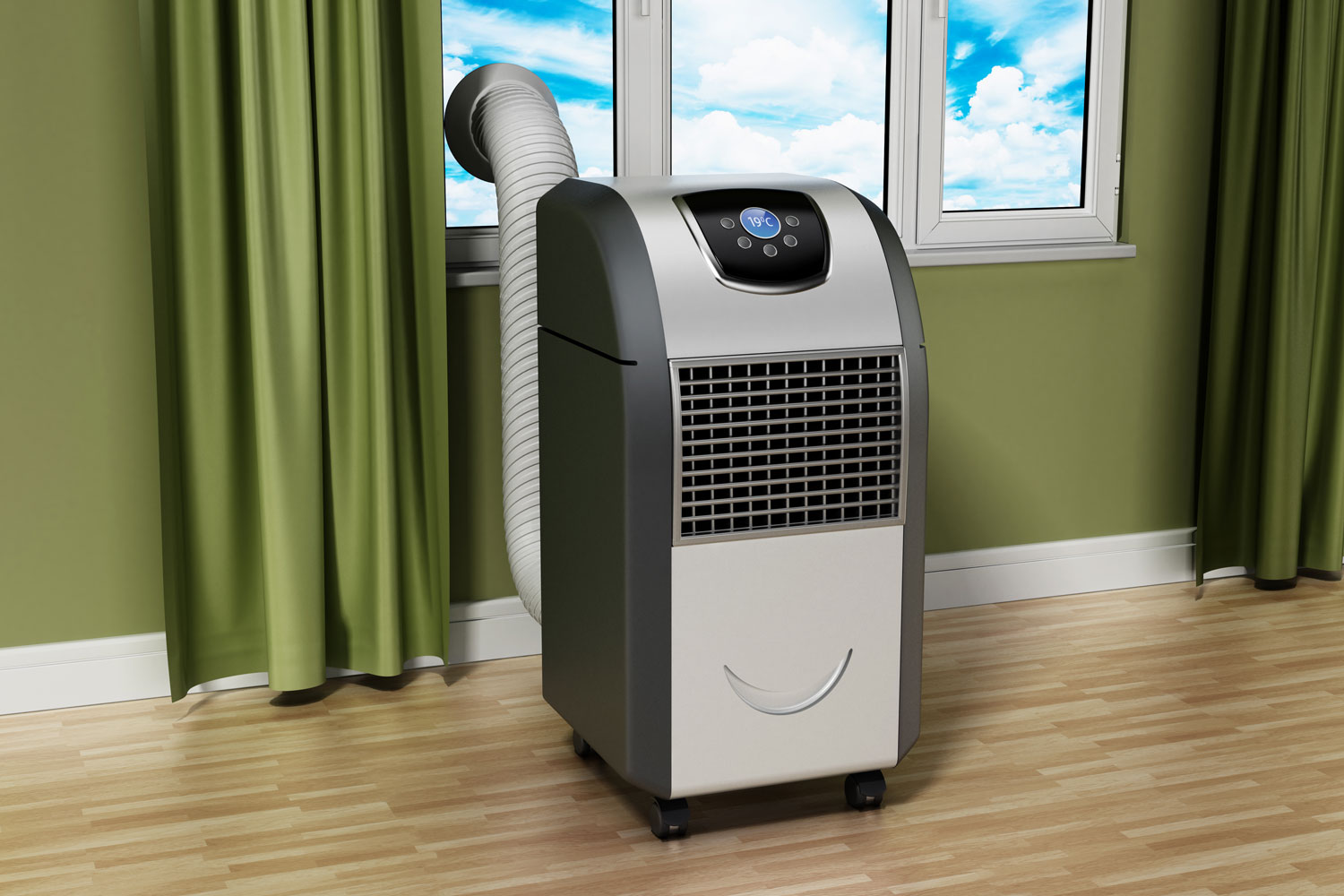Installing a portable air conditioner into a sliding window is typically easy. But mishaps might still occur if you don't correctly follow the setup procedure. So how can you install a portable air conditioner in a sliding window properly? We researched the process for you, and here's what we found.
To install a portable air conditioner into a sliding window, you have to follow the appropriate safety protocols. Once you do that, you'll want to follow these steps:
- Build the sliding window panels included in the portable air conditioner kit.
- Install the panel assembly into the sliding window and screw this setup in place.
- Attach one end of the exhaust hose to the AC unit's exhaust port.
- Connect the nozzle to the other end of the hose and place that component into the window assembly.
- Plug the air conditioner and turn it on to check for faults.
Take note that safety should still be your priority before attempting to install a portable air conditioner in a sliding window. Continue reading as we talk about these safety measures in greater detail. We'll also tackle more of the steps of installing the portable AC unit through a sliding window.

What Are The Safety Measures Before Installing An Air Conditioning Unit?
Following proper safety protocols before installing air conditioning systems, regardless of type, will lessen the chances of serious injury. Some of the common safety measures to take include:
Read The Owner's Manual
Portable air conditioners often have instruction manuals to help installers with the setup process. These guides generally have other information to improve the safety of installers while promoting the success of the installation procedures.
Have An Assistant
Despite having the word 'portable' in its name, a moveable AC unit will still weigh roughly 50-80 pounds. Overestimating one's strength to handle this weight alone can invite accidents.
Having an assistant help with the lifting can reduce the risks of unfortunate events happening during the installation process.
Find out more about the size of a portable air conditioner by reading our post here.
Avoid Using An Extension Cord
Generally, it's unwise to use a standard extension cord to power a portable air conditioner. For example, using a 600-watt capacity extension cord on an 8,000-BTU portable AC unit with a power requirement of 1,000 watts may significantly increase the risks of a short circuit.
If the nearest wall socket is still relatively far to vent the portable air conditioner properly, it's still possible to use an extension cord for that appliance.
Instead, users should purchase a special extension cord that can supply the necessary power to the portable cooling system without any additional risks.
See this power strip on Amazon here.
Save Power Supply For Last
Don't plug the portable air conditioner into a nearby socket before installing the rest of the set's components. Doing so will charge the appliance with electricity, putting the installer at risk of electrocution.
Mind The Gaps
Some portable air conditioner setups may leave windows open for their vent hoses. In turn, owners should also think about potential security breaches because of the unwanted space.
Make sure to ponder upon solutions to seal the gap after the installation. Installing additional security measures, such as an alarm or CCTV, can also help protect the space against thieves and other individuals with malicious intent.
View this security system on Amazon.
How To Install A Portable Air Conditioner In A Horizontal Sliding Window?

Before purchasing a portable air conditioner, it's best to measure the clearance needed to vent the appliance through your horizontal sliding window. Generally, you'd want the clearance to be at least 12 inches on each side of the portable AC unit to promote proper airflow.
Perhaps the only extra tool needed for this installation process is a Phillips head screwdriver. The other components should already be included in the appliance's package.
Once you deem yourself prepared for the job, continue this operation by following these steps:
- Connect the sliding window panels, which should be in the kit.
- Attach the foam gaskets or strips to each end of the sliding window panels.
- Open the sliding window and install the panel assembly into the gap. Adjust the panel assembly to fit snuggly and close the glass pane on it.
- Screw the window and the air conditioner panel assembly in place.
- Extend the exhaust or vent hose. Then, attach one end to the exhaust port at the rear of the AC's main indoor unit.
- Rotate the hose's connector clockwise three times to secure it in place.
- Secure the nozzle to the other end of the exhaust hose. Rotate this component three times.
- Insert the nozzle into the window panel.
- Plug the portable air conditioner into a nearby wall socket and turn on the appliance.
If you run into problems like your portable AC leaking water after installation, check out our post here.
You can also check out this video for a visual representation of the steps mentioned above:
How To Install A Portable Air Conditioner Into A Double-Hung Window?
Also called a vertical sliding window, a double-hung window typically has two sashes that slide up and down instead of the left-and-right sliding motion of a horizontal sliding window.
However, the only difference between this installation process and the setup procedure to place a portable AC in a standard sliding window is the orientation of the window assembly.
Note that you need to place the panel assembly of a portable air conditioner in a vertical orientation for a standard sliding window setup. On the other hand, the panel assembly needs to sit horizontally for double-hung window arrangements.
Watch the video below to see this installation procedure in action:
How To Install An LG Portable Air Conditioner?

Note that some portable air conditioners, such as those from LG, may demand additional steps to ensure the installation is secure.
What You'll Need
- Utility knife
- Phillips screwdriver
- Power drill with 5/64 drill bit
Step By Step Guide
- Screw the diffusers to both ends of the exhaust or vent hose.
- Insert and slide the hose into the rear exhaust port of the main body of the portable cooling unit.
- Cut the foam seal to match the size of the window.
- Use two strips on both sides of the window's sash.
- Attach two more foam seal strips to the top and bottom sides of the window's opening.
- Place the vent panel assembly in the window and extend it to its maximum possible length. Then, mark the area where the panel stops.
- Use the drill and create a pilot hole into the vent panel assembly. Make sure to drill into one of the pre-drilled holes that best lines up with the marked area.
- Use one of the screws in the kit and screw the window extension kit to secure its position.
- Insert the panel assembly into the window frame.
- Close the window and add the included security bracket if necessary.
- Cut the non-adhesive foam seal to size and insert it into the window's gap.
- Insert the vent hose assembly into the window panel opening.
- Plug the LG portable air conditioner into a nearby wall socket and check if it runs efficiently.
LG advises its customers to have at least a 20-inch clearance on all sides for the company's portable air conditioner. Also, avoid any obstructions that might otherwise block the vents from functioning as intended.
Watch the clip below for additional details on how to install LG's portable air conditioner in a sliding window:
See this LG air conditioner on Amazon.
How Long Can The Exhaust Hose Be On A Portable Air Conditioner

Most portable air conditioners generally have exhaust hoses with lengths that range from 5-7 feet. Extending the hose beyond its allowable length may cause it to tear, reducing the cooling efficiency of the portable AC.
That said, you can try to purchase a longer portable AC exhaust hose if you'd prefer.
View this exhaust hose on Amazon here.
To Wrap It All Up

Setting up a portable air conditioner in a sliding window is possible for horizontal and vertical orientations of the opening.
Installers should follow proper safety protocols to prevent potential dangers or malfunctions during and after the installation process.
The portable AC unit should supply sufficient cooling to the indoor space if done correctly.
Regardless of your level of expertise, make sure to follow the directions we gave above, and don't be afraid to ask a friend to help out!




